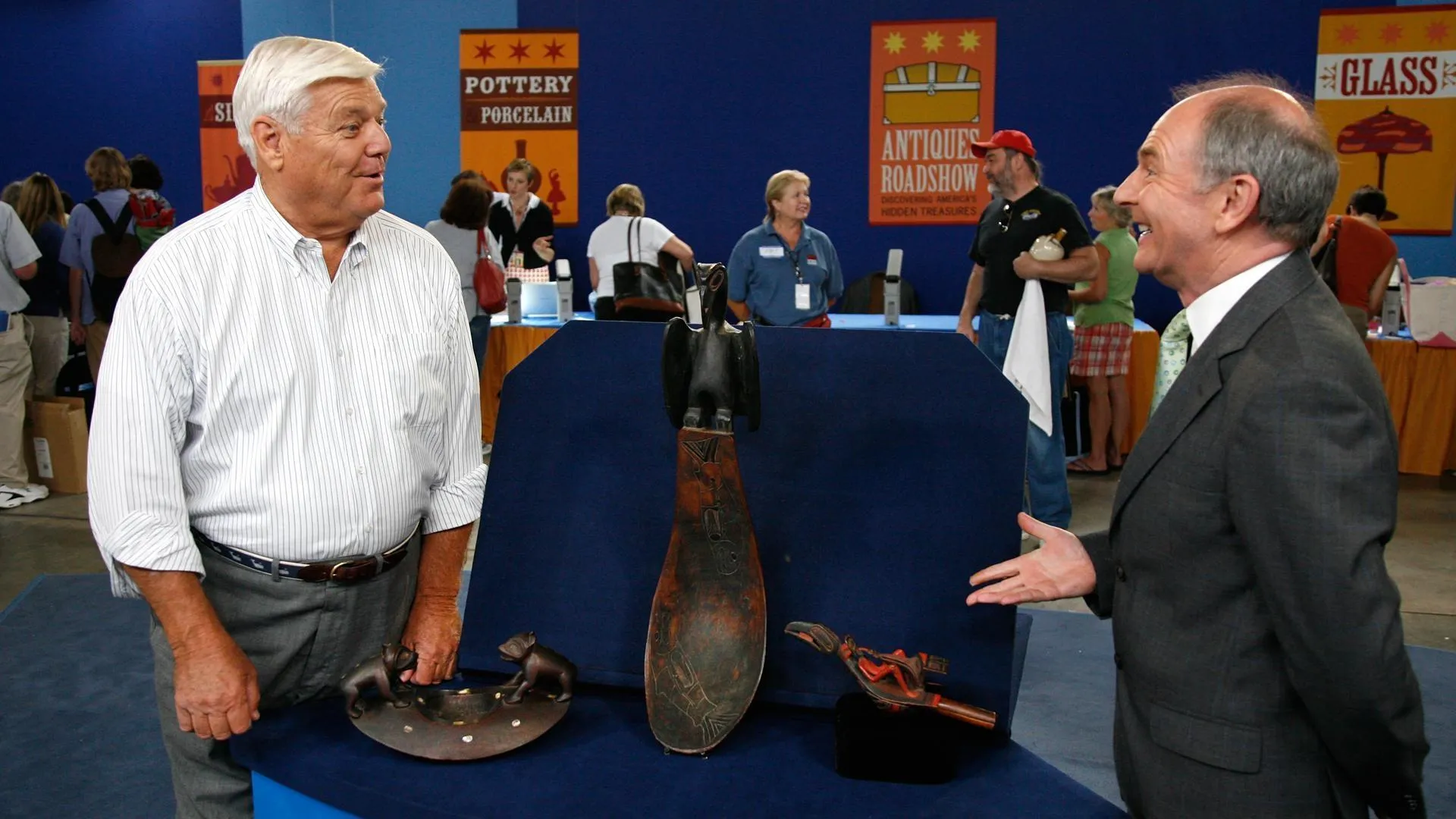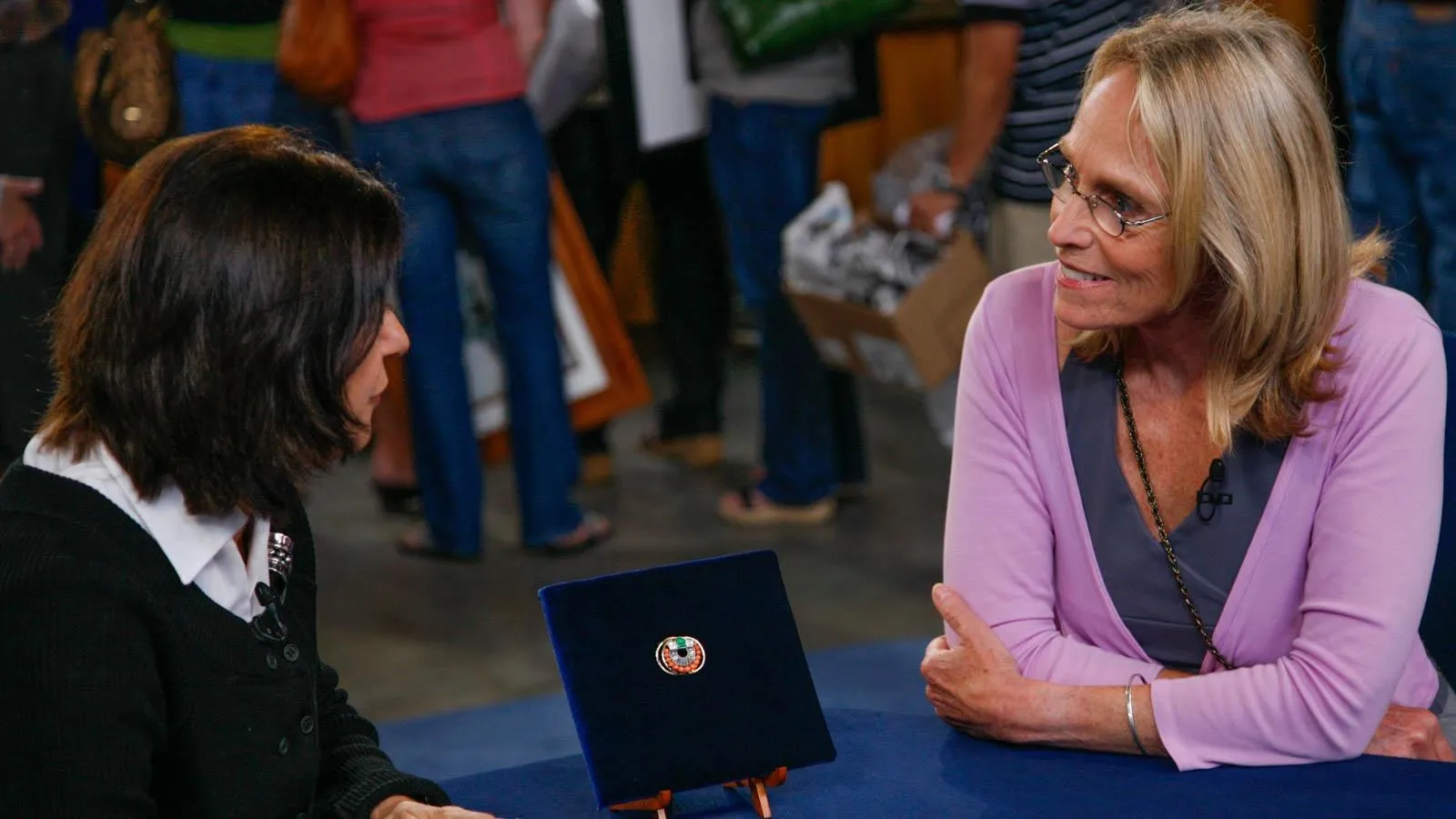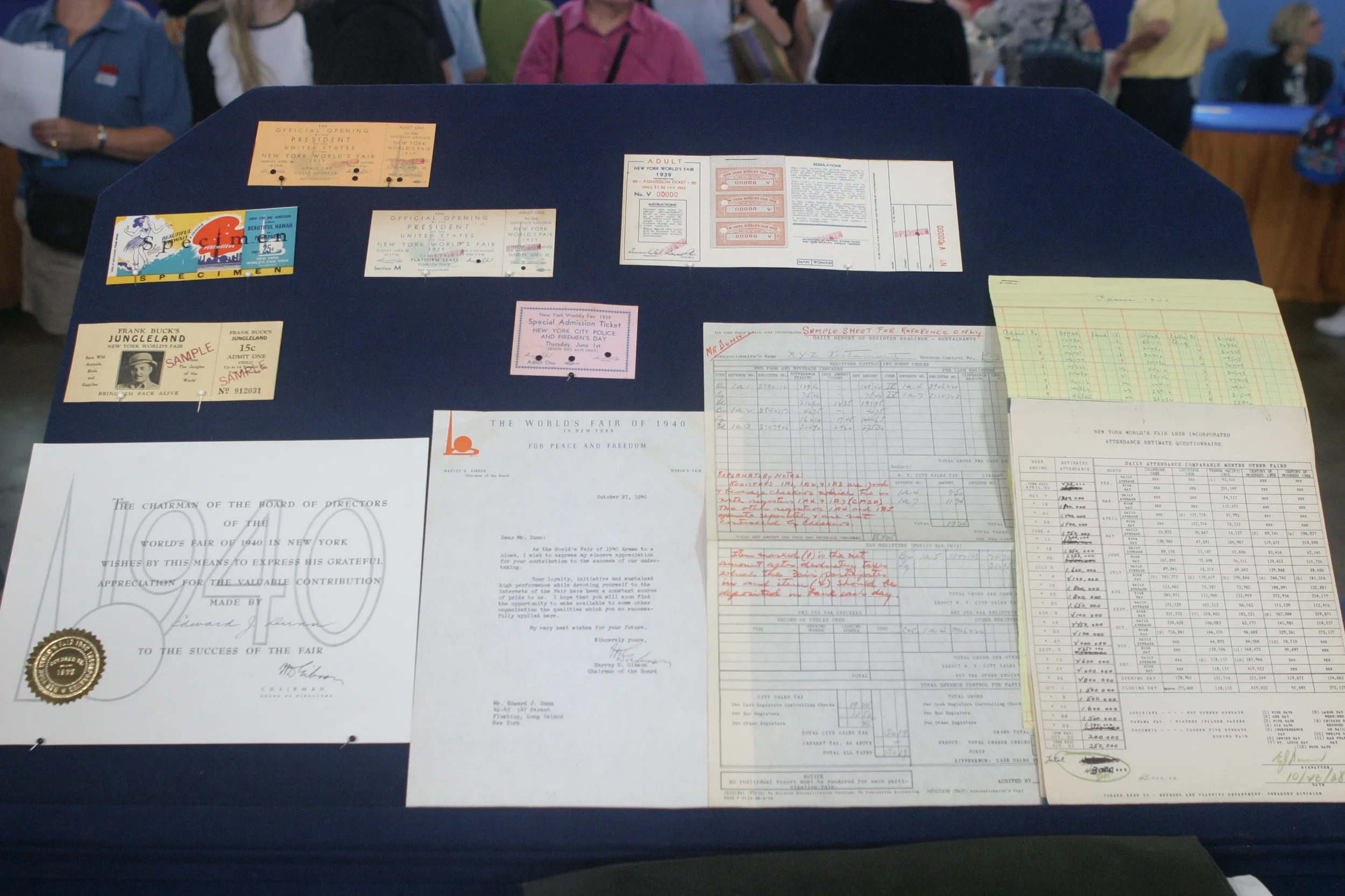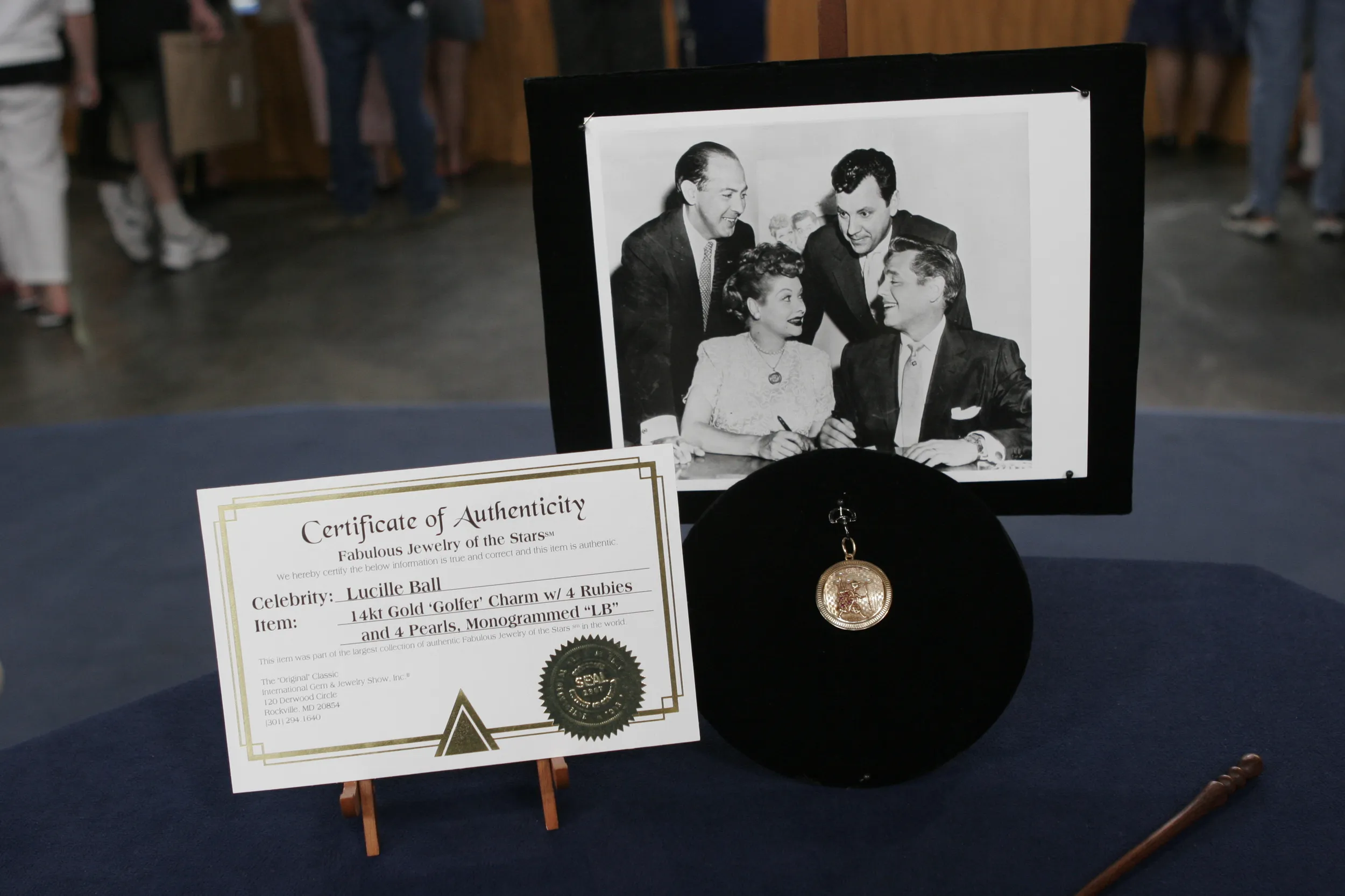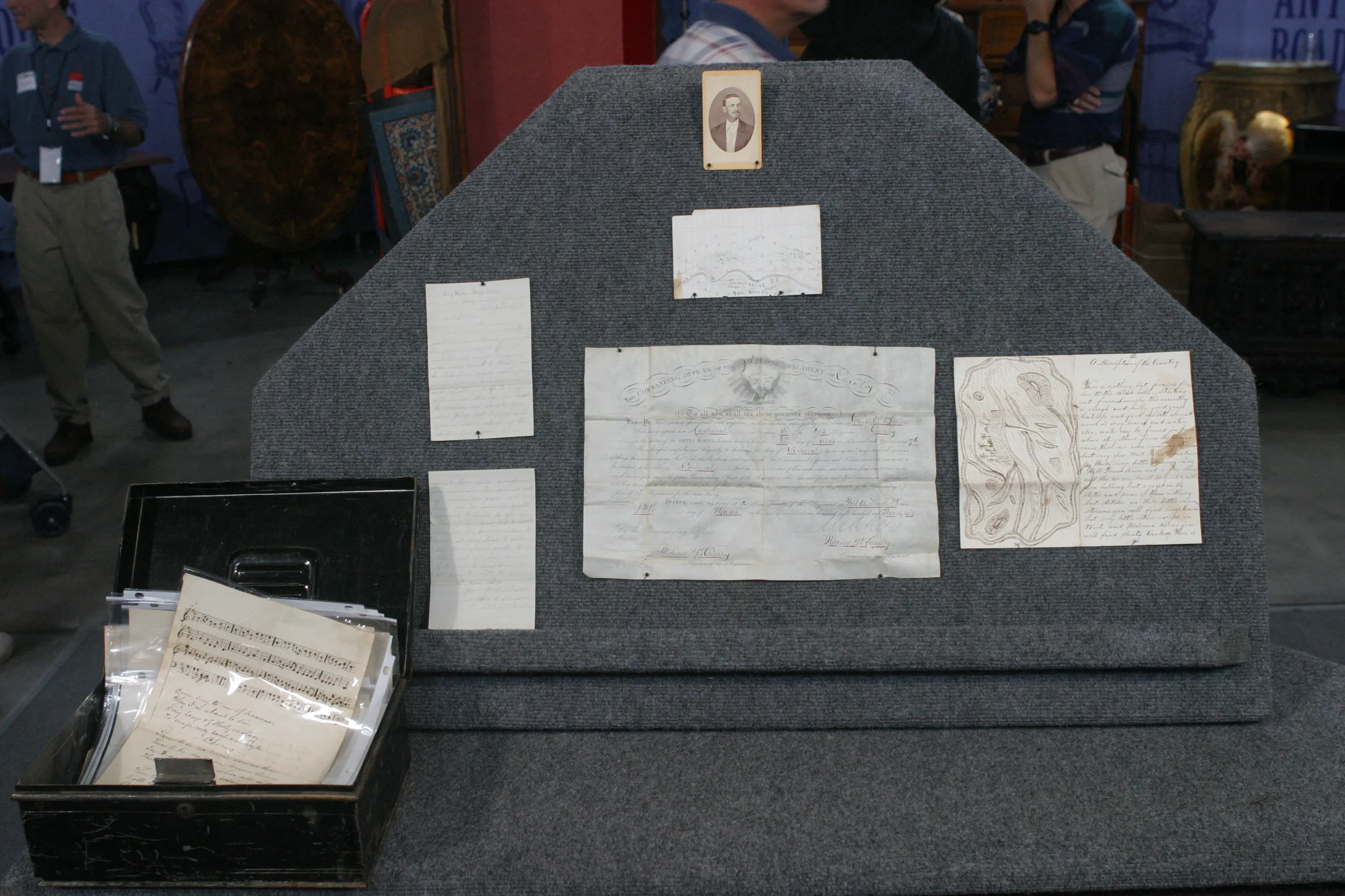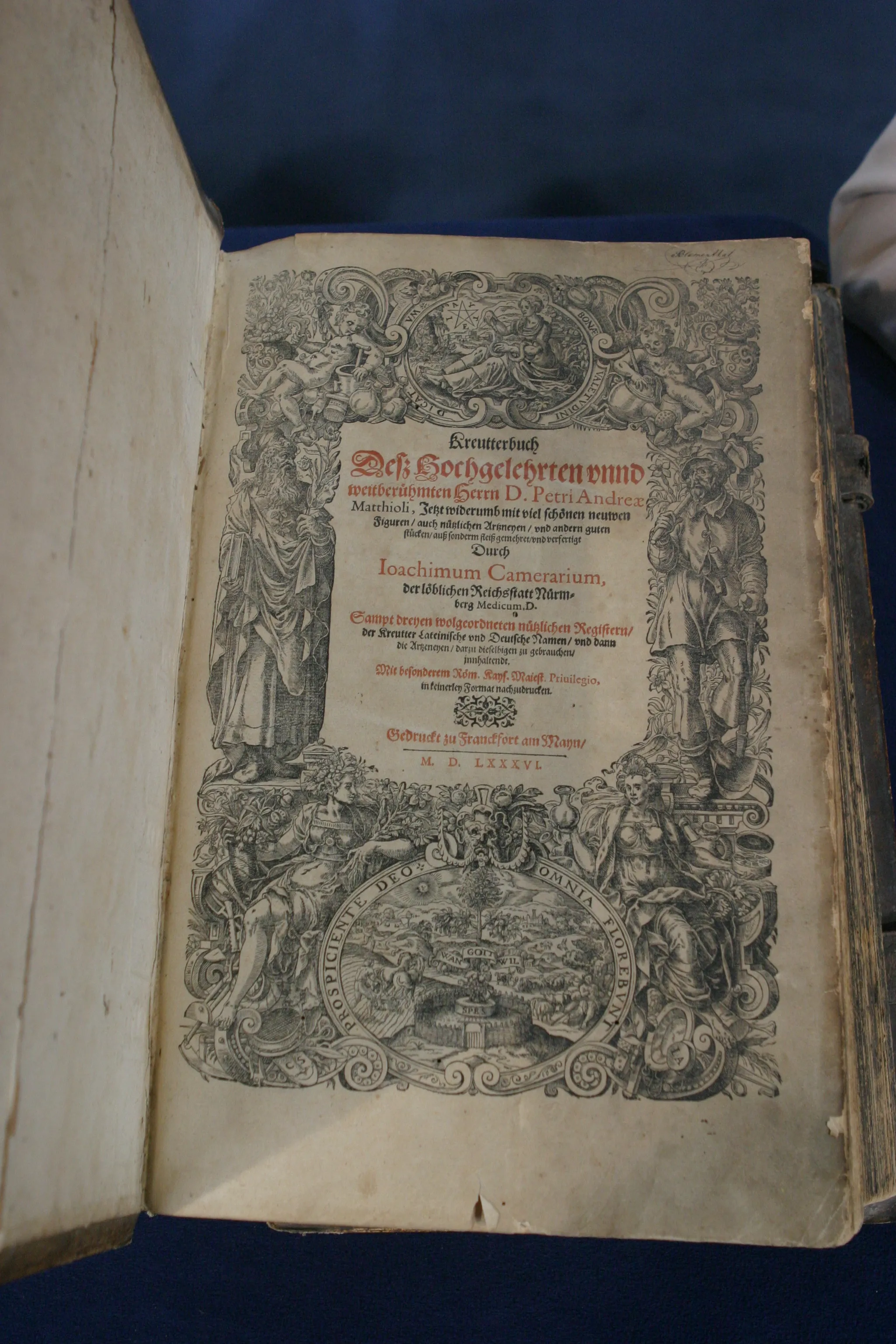GUEST: I brought in military buttons. They were in a attic, given to my mother from f, friends who used to take care of her when she was little. I've had them now about, I'd say, a good 25 years. I just keep them in a box.
APPRAISER: What's the card for?
GUEST: This card belongs to an actress or a performer, uh, Bessie Gillette. She was a performer with the Hammerstein Grand Opera Company in 1907.
APPRAISER: Were the buttons hers?
GUEST: They were not hers. Uh, story is that these belonged to her paramours, if you will.
APPRAISER: (chuckling): Uh-oh.
GUEST: (chuckling): I'm sure-- she was a performing artist, and I'm sure she had quite a bevy of young men coming to see her.
APPRAISER: Bless her heart.
GUEST: (laughs)
APPRAISER: We have a variety of uniform buttons, military uniform buttons. The first two are the artillery officer eagle "A" buttons.
GUEST: Mm.
APPRAISER: They have the eagle on the front, they have the "A" in the shield, and the "A" denotes the artillery branch of service. From the front, they look identical.
GUEST: Uh-huh.
APPRAISER: What's cool about them is the back. We have the Horstmann of Philadelphia maker mark on the back.
GUEST: Right.
APPRAISER: Of this one. Which is a good early back mark. That's what you refer to the stamping on the back of the button as, is a back mark. They change as time progresses.
GUEST: Mm.
APPRAISER: The construction and the makers change. This one has a large-letter "Waterbury Button Co."
GUEST: Right-- right, right.
APPRAISER: ...in Waterbury, Connecticut. One of the largest button makers. This particular style is post-Civil War, and to collectors, little details make big differences.
GUEST: Uh-huh.
APPRAISER: This button, being Civil War, is about a $60 button.
GUEST: Uh-huh.
APPRAISER: This button, being postwar, is about a $10 or $15 button.
GUEST: Uh-huh.
APPRAISER: So it's four times more valuable being a Civil War button than a postwar button...
GUEST: Right, right.
APPRAISER: ...with the same face.
GUEST: Right.
APPRAISER: These two on this side...
GUEST: Mm.
APPRAISER: ...are pre- and postwar, as well.
GUEST: Okay.
APPRAISER: This one is the National Guard of Pennsylvania.
GUEST: Mm.
APPRAISER: It has the "NG" at the bottom for National Guard, and it has the state seal of Pennsylvania.
GUEST: Uh-huh.
APPRAISER: You always hear about somebody that wins the lottery.
GUEST: Yeah.
APPRAISER: This button won the lottery.
GUEST: Oh, yeah? (chuckles)
APPRAISER: The postwar one is only worth about $15.
GUEST: Uh-huh.
APPRAISER: $15, $20.
GUEST: Yeah.
APPRAISER: This one is pre-war. It's for the State of Arkansas.
GUEST: Mm-hmm.
APPRAISER: The northern company that made it, Horstmann & Allien, they were located in New York. They manufactured buttons and shipped them south, which wasn't very, uh, highly looked upon in that timeframe...
GUEST: Oh.
APPRAISER: ...which is the late 1850s, early 1860s.
GUEST: Okay. Oh, okay.
APPRAISER: They shipped only a small quantity to Arkansas. Therefore, there's only a handful of ‘em in existence.
GUEST: Oh.
APPRAISER: You can get several of the states fairly commonly. You can find Virginias, you can find South Carolinas, you can find North Carolinas.
GUEST: Uh-huh.
APPRAISER: Very few people have Arkansas.
GUEST: Oh.
APPRAISER: In a retail situation, that button would bring at least $5,000.
GUEST: Really? Wow.
APPRAISER: (chuckles)
GUEST: (chuckles) That's incredible.

